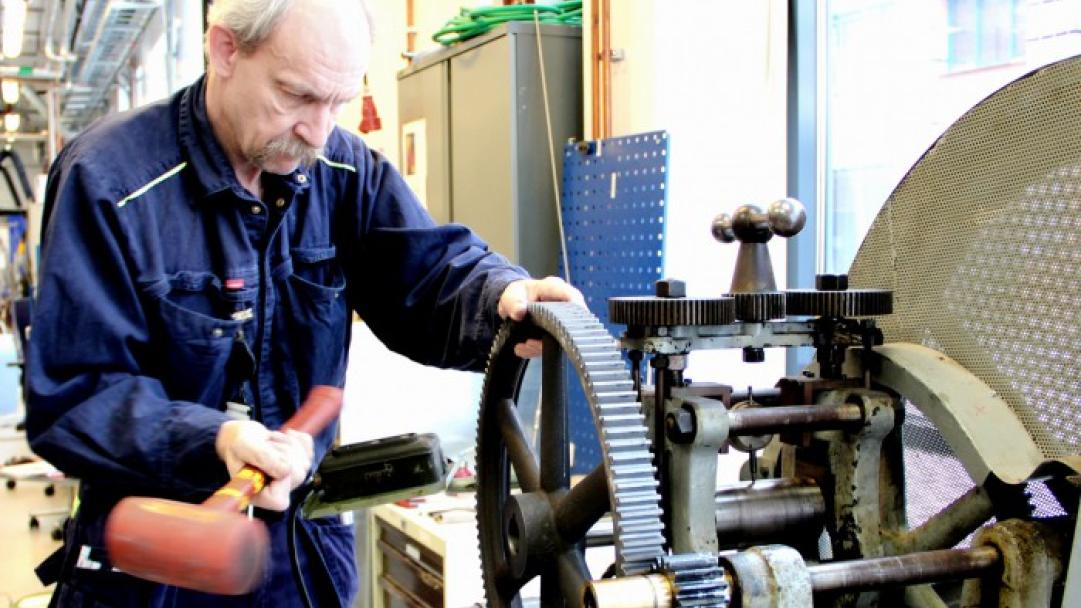Contact


3D technology saves old rolling mill
An old rolling mill in Swerim's basement needed a new cogwheel. Because old spare parts are often difficult to procure, Swerim decided to cast their own cogwheel using 3D technology.
An old rolling mill has been standing in Swerim's workshop since the 1920s, and is mainly used to roll small metal sample pieces. But it stood idle for a year because of a broken cogwheel. Spare parts for rolling mills are difficult to procure, which is why researchers at Swerim had to devise another way to replace the cogwheel.
Manufacture unique products cheaper
The solution was to cast a cogwheel using the 3D sand printer at Swerim. In order to do this, the old wheel first had to be scanned to create a CAD model. The information was then fed into the 3D printer, along with information on shrinkage and casting allowances. A sand mould could then be 3D printed, in which the researchers could cast the cogwheel.
"One of the advantages of 3D technology is being able to manufacture unique or individual components which otherwise would have been expensive and difficult to make. This was fully apparent when we manufactured the new cogwheel," says Sten Farre, researcher at Swerim.
New cogwheel in place
The new cogwheel is made from ductile iron, as opposed to the old one which was made from grey cast iron. Ductile iron is stronger than grey cast iron and is more suited for this application. The cogwheel was not made from ductile iron originally as the material did not exist at the time.
The new cogwheel is now in place and the rolling mill is once again working as it should!
